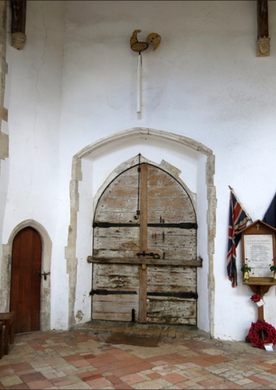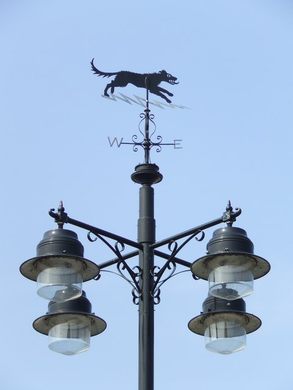The Devil's Fingerprints
A legendary ghostly hound supposedly left dark marks on a place of worship.
Stories and sightings of ghostly and demonic black dogs are woven through the folklore and mythology of the British Isles. Perhaps the most ancient and well known of these entities is Black Shuck.
Tales of Black Shuck, or simply Shuck, haunt rural East Anglia, the coast and countryside of the counties of Essex, Suffolk, Norfolk, and Cambridgeshire.
Descriptions of the creature’s nature and appearance vary across time and space. What remains consistent, however, are the descriptions of its tremendous size—almost that of a horse—its shaggy black fur, and its fiery red eyes. Some describe it as a guardian or guide to the lost, while others say it is an omen of death. It’s name comes from the Old English scucca and skuh, meaning “devil” and “terrify,” respectively.
The residents of Blythburgh favor the latter, after the devastating events of 1577.
On the August 4, during Sunday services in the parish church of the Suffolk village, most of the village was gathered. A tremendous storm rose up and battered Blythburgh’s Holy Trinity Church. Lightning repeatedly struck the church, dislodging the church’s spire and causing it to fall through the roof upon the gathered congregation. Amid the darkness and destruction, illuminated only by stunning flashes of lightning, a looming, shaggy, black dog is said to have appeared. Black Shuck rushed upon some worshipers knelt in prayer before dashing through the center aisle and out of the church, leaving long black scorch marks upon the large wooden doors. These hellish claw marks are known locally as “The Devil’s Fingerprints,” and remain to this day.
According to experimental archaeology and researchers who study protective “witch marks,” these tear-shaped symbols were more likely to have been placed upon the church door intentionally with a candle or taper. Ironically, such an intentional burn was likely intended to protect the church from curses and demons, as opposed to being caused by them.
Throughout the village of Blythburgh, as well as in the nearby town of Bungay, which suffered a similar horror on the same night, imagery of Black Shuck has become iconic. Bungay’s coat of arms features the creature, as does the Town Hall’s weathervane, which continues to attract lightning.
Community Contributors
Added by
Edited by
Plan Your Trip
The Atlas Obscura Podcast is Back!























Follow us on Twitter to get the latest on the world's hidden wonders.
Like us on Facebook to get the latest on the world's hidden wonders.
Follow us on Twitter Like us on Facebook